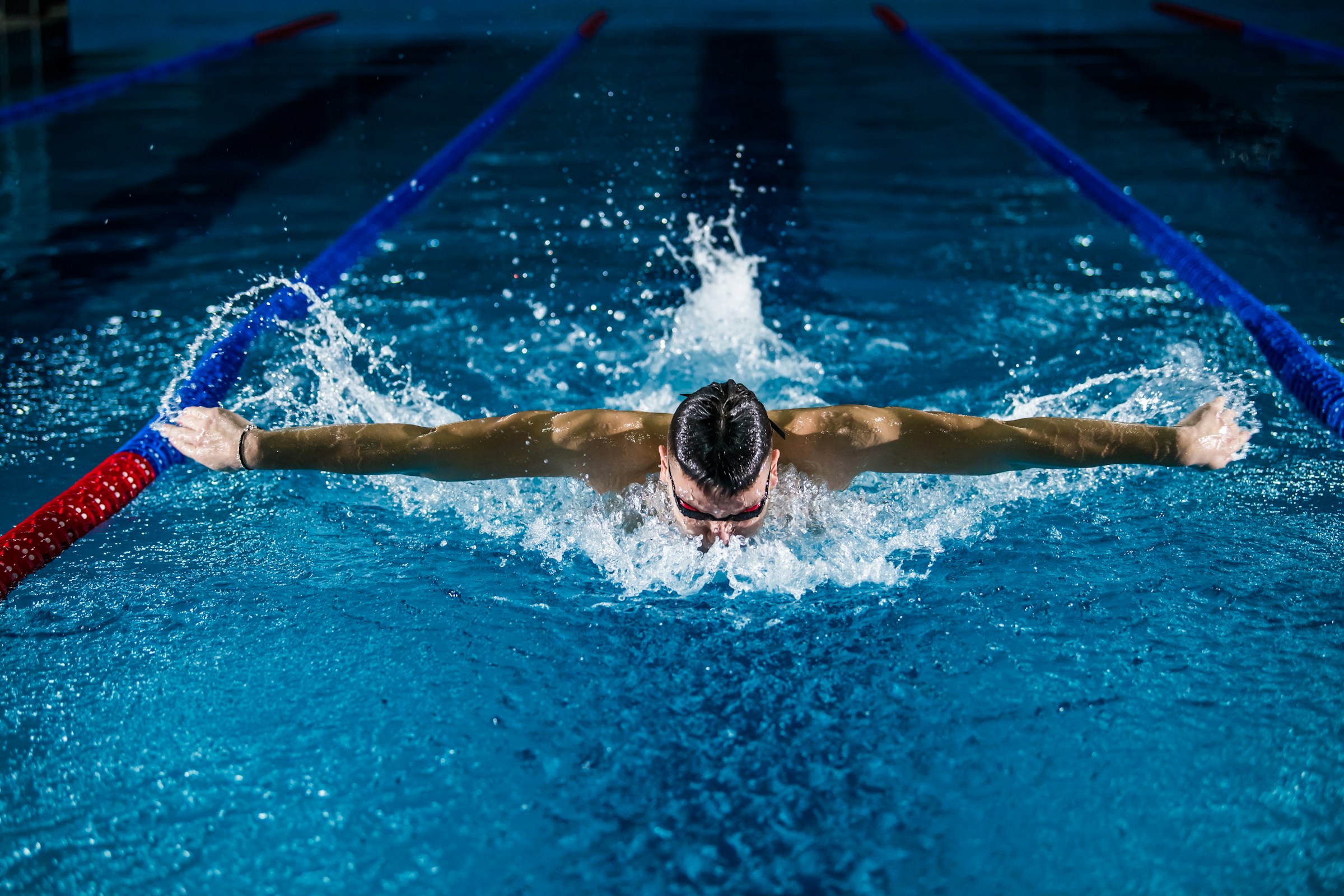Understanding Swim Stroke Dynamics
Swim stroke efficiency hinges on several factors, particularly the biomechanics of swimming. Understanding these components can significantly enhance one’s swimming techniques. Key elements to focus on include the body position, arm and leg movements, and synchronous breathing. Each stroke—freestyle, backstroke, breaststroke, and butterfly—demands precise technique for optimal performance. Mastery of these elements leads to less resistance in the water, allowing swimmers to glide more smoothly and efficiently.
Proper technique is pivotal in maximizing efficiency. This means using the least amount of energy for the greatest distance, a concept central to competitive swimming. Skills such as maintaining the streamline position and optimizing the catch phase can drastically reduce drag and improve speed and stamina in the water.
Also to read : Elevating Athlete Performance: Leveraging Wearable Tech to Prevent Overtraining in Elite Professionals
Swimmers often encounter stroke-related challenges like improper kicking technique or incorrect arm pulls, which can hinder progress. Many swimmers also struggle with timing and coordination, especially in complex strokes like the butterfly. Remedies involve targeted practice, often supported by drills, to address and correct these issues. Mastering these components can significantly improve performance and enjoyment in the water.
Detailed Analysis of Major Swim Strokes
Exploring the four key swim strokes—freestyle, backstroke, breaststroke, and butterfly—helps enthusiasts understand and improve their technique. Here’s a closer look at each stroke’s essential elements and how mastery can enhance performance.
Have you seen this : Master Mountain Biking: Proven Strategies to Elevate Endurance and Conquer Challenging Trails
Freestyle Technique
Freestyle, known for its speed, emphasises streamlined body position and efficient arm movements. To excel, swimmers must maintain a long, flat body posture. Common pitfalls include crossing arms over the centre line and over-rotating hips, which increase drag. Correcting these issues with drills like the “catch-up drill” optimises body alignment.
Backstroke Fundamentals
Backstroke requires distinct body positioning—with a stable, horizontal backline and minimal head movement. Identifying the correct timing of arm strokes and breathing patterns is crucial to sustaining rhythm. Drills, such as single-arm backstroke practice, support refining these skills for better control.
Breaststroke Insights
The breaststroke features a unique kick and glide rhythm. The propulsive power comes from a whip kick and a glide that ensures optimum energy use. Focusing on the sequence of pull, breath, kick, and glide with exercises like the “pull-buoy” drill builds strength and coordination.
Butterfly Stroke Mastery
The butterfly stroke’s hallmark is its wave-like movement, requiring impeccable timing and rhythm. Swimmers perfect this by synchronising arm pulls with undulating body motions. Effective routines like ‘dolphin kick’ drills enhance power and bolster stroke efficiency, bringing fluidity and speed to one’s technique.
Top Technical Drills for Stroke Improvement
Swimmers seeking to elevate their technique efficiency should consider incorporating drills into their routine. These specialised exercises focus on refining the mechanics of each stroke. Technical swimming exercises like the “kickboard drill” isolate the leg movement, enhancing propulsion and developing a robust kick technique crucial for all strokes.
Choosing the right drills hinges on assessing stroke-specific needs. For instance, freestyle stroke refinement can be achieved using the “fingertip drag drill,” which enhances high elbow recovery. The backstroke can benefit from drills focusing on maintaining a straight arm and consistently angled entry into the water.
An effective daily training regimen should weave these drills seamlessly. Start by allotting dedicated time for stroke refinement drills, rotating them to address various biomechanics of swimming. Balance these drills with standard swim workouts to ensure comprehensive skill development.
These drills not only highlight areas needing improvement but also steadily build confidence and proficiency, ensuring swimmers achieve optimal performance levels. By integrating drills wisely, swimmers can unlock potential and significantly boost their swim efficiency.
Integrating Drills into Your Training Regimen
Incorporating drills effectively into swim training plans can markedly enhance stroke development. A diverse workout integration strategy should form the backbone of your training regimen. Variability not only maintains interest but also challenges the muscles, thereby accelerating technique improvement.
To begin, swimmers should identify key areas needing refinement and choose drills tailored to these needs. For example, freestyle swimmers might focus on high elbow recovery through specific drills. Balanced integration of drills with regular sessions ensures that skill enhancement occurs without neglecting endurance and speed.
Coaches and athletes often provide valuable insights into effective regimens. Successful plans blend drills that target weaknesses with routines that play to a swimmer’s strengths, creating a holistic training approach. Listening to expert advice on swimming can lead to adopting essential habits for constant progression.
The continuous evolution of swimming demands lifelong learning. Resources like online instructional videos and swim tutorials offer visual feedback indispensable for technique mastery. Transform your workouts by consistently refining your approach, using innovative drills and insights from seasoned coaches and athletes. With careful integration, swimmers can boost performance, reaching their full potential.
Expert Tips for Enhanced Stroke Efficiency
Improving stroke efficiency requires incorporating valuable insights from seasoned swimmers and coaches. Technique improvement is primarily about mastering the fundamental aspects of swimming. Here we explore professional swimming tips aimed at honing your technique and outcomes.
To begin, pay attention to maintaining a streamlined body. A continuous and streamlined body position reduces resistance and facilitates smoother gliding through the water. The importance of synchronization in arm and leg movements cannot be overstated. Coordinating these actions seamlessly enhances both speed and energy conservation.
Notably, regular feedback from coaches is invaluable. A coach’s perspective helps identify persistent flaws and areas for enhancement. Emphasising elements like a high elbow catch or correct breathing patterns can transform a swimmer’s performance. It’s vital to adopt essential habits, such as consistent drills tailored to personal weaknesses, ensuring effective technique improvement over time.
Finally, commit to a routine of lifelong learning. Resources like instructional videos provide ongoing education in refining swim techniques. Engaging in communities where you can share experiences and receive input further supports your growth as a swimmer. Embrace these expert advice strategies to elevate your swim efficiency to new heights.
Video Tutorials and Illustrative Guides
Harnessing the power of visual learning tools is vital in advancing swim techniques. Swim tutorials and instructional swimming videos offer invaluable guidance, serving as a bridge for visual understanding that written instructions alone cannot provide.
The availability of swim tutorials ranges widely, from professional analysis of Olympic swimmers to beginner technique breakdowns. Such resources provide a comprehensive look at common mistakes and best practices. By observing how expert swimmers execute each stroke, viewers can emulate proper form.
Visual feedback plays a critical role in self-assessment and improvement. Watching videos enables swimmers to compare their techniques with those demonstrated by professionals, identifying areas needing attention. This visual analysis can assist in fine-tuning aspects like stroke range or leg movement.
For those seeking reliable swim technique visuals, there are numerous channels and platforms dedicated to swimming education. Searching for content with high viewer ratings and expert endorsement can lead to fruitful learning experiences. Platforms like YouTube host a variety of channels offering detailed stroke tutorials and coaching advice, perfect for any swimmer dedicated to perfecting their craft. Through consistent engagement with these visual resources, swimmers can significantly enhance their technique efficiency.




